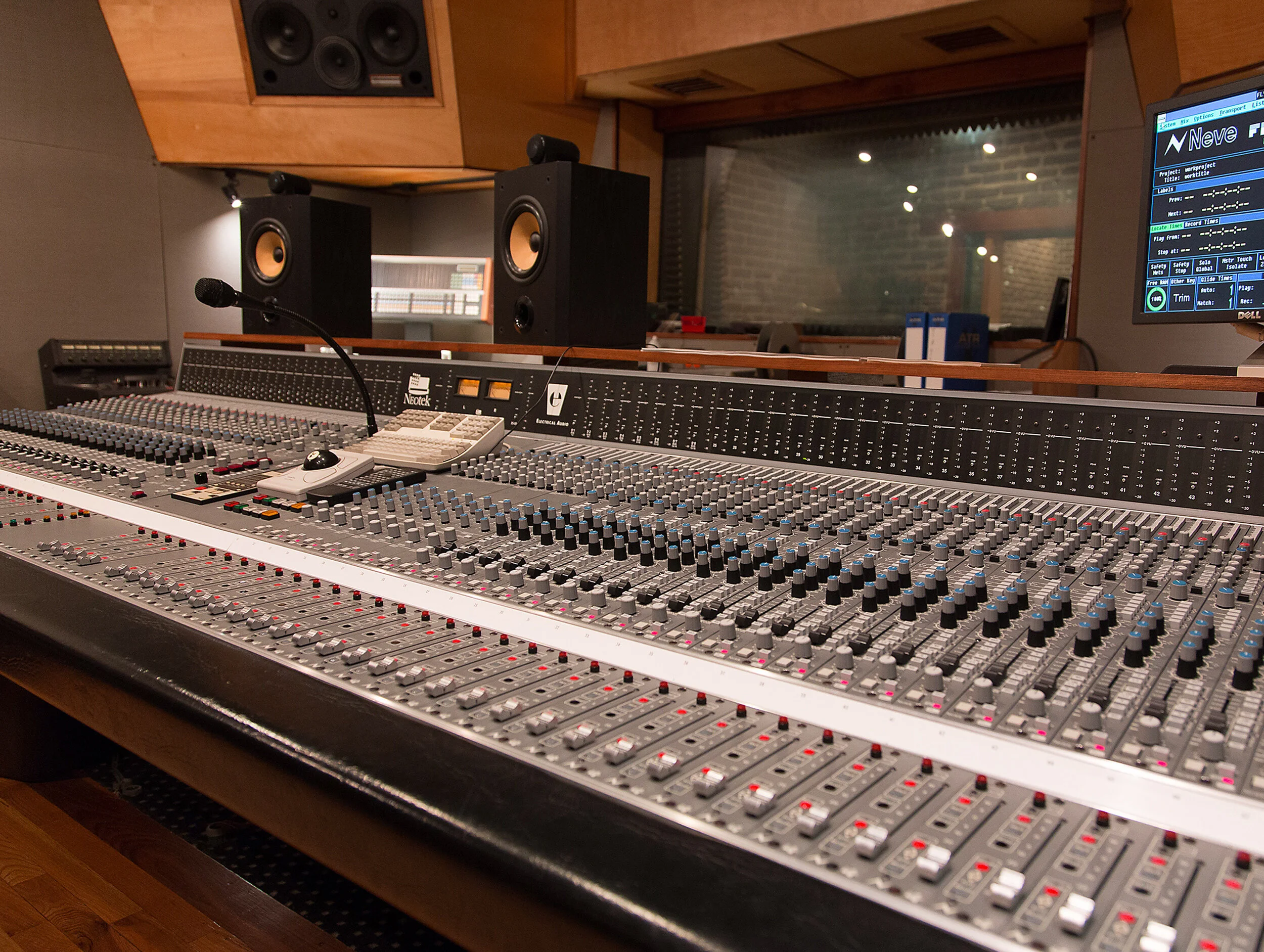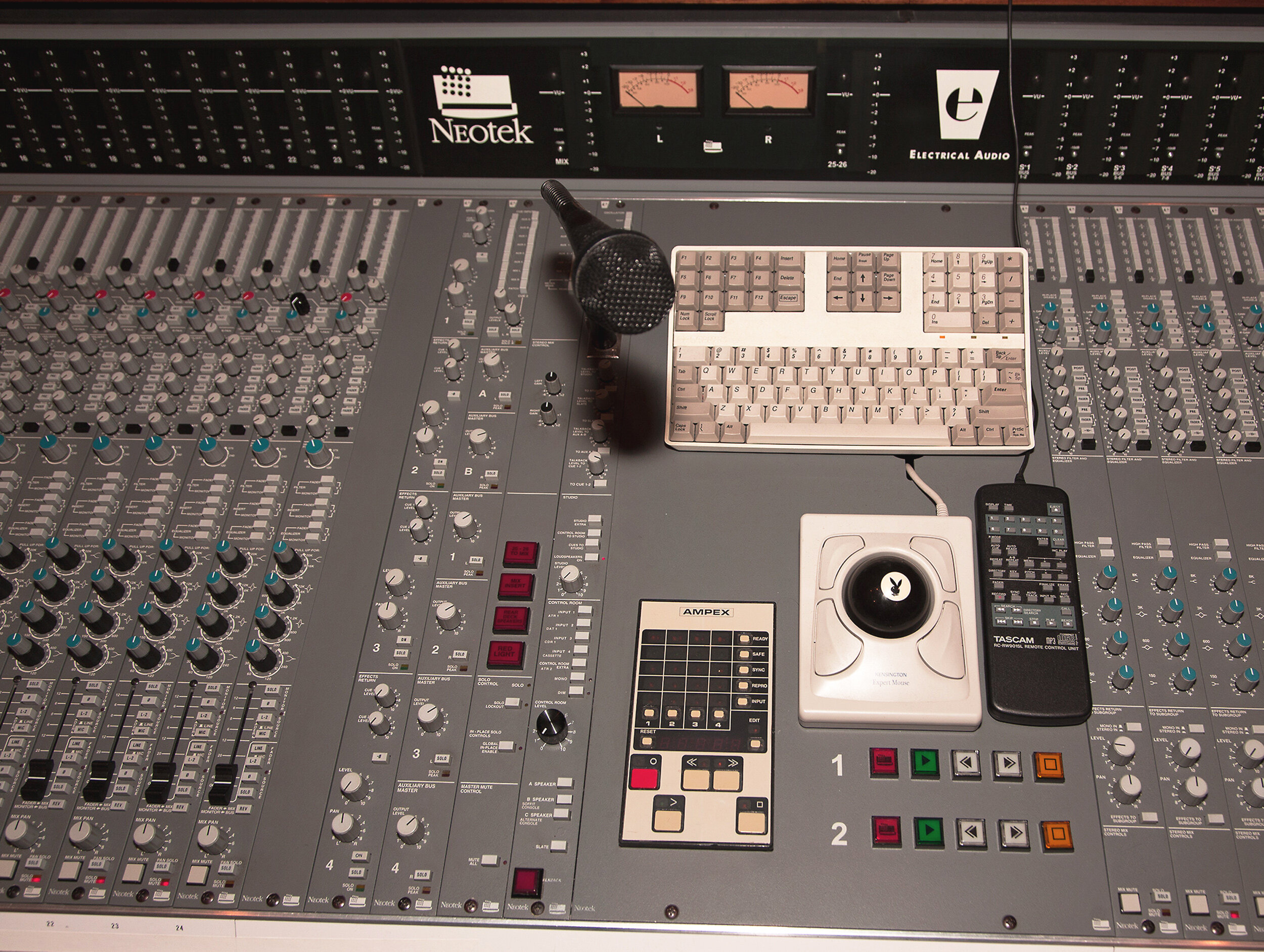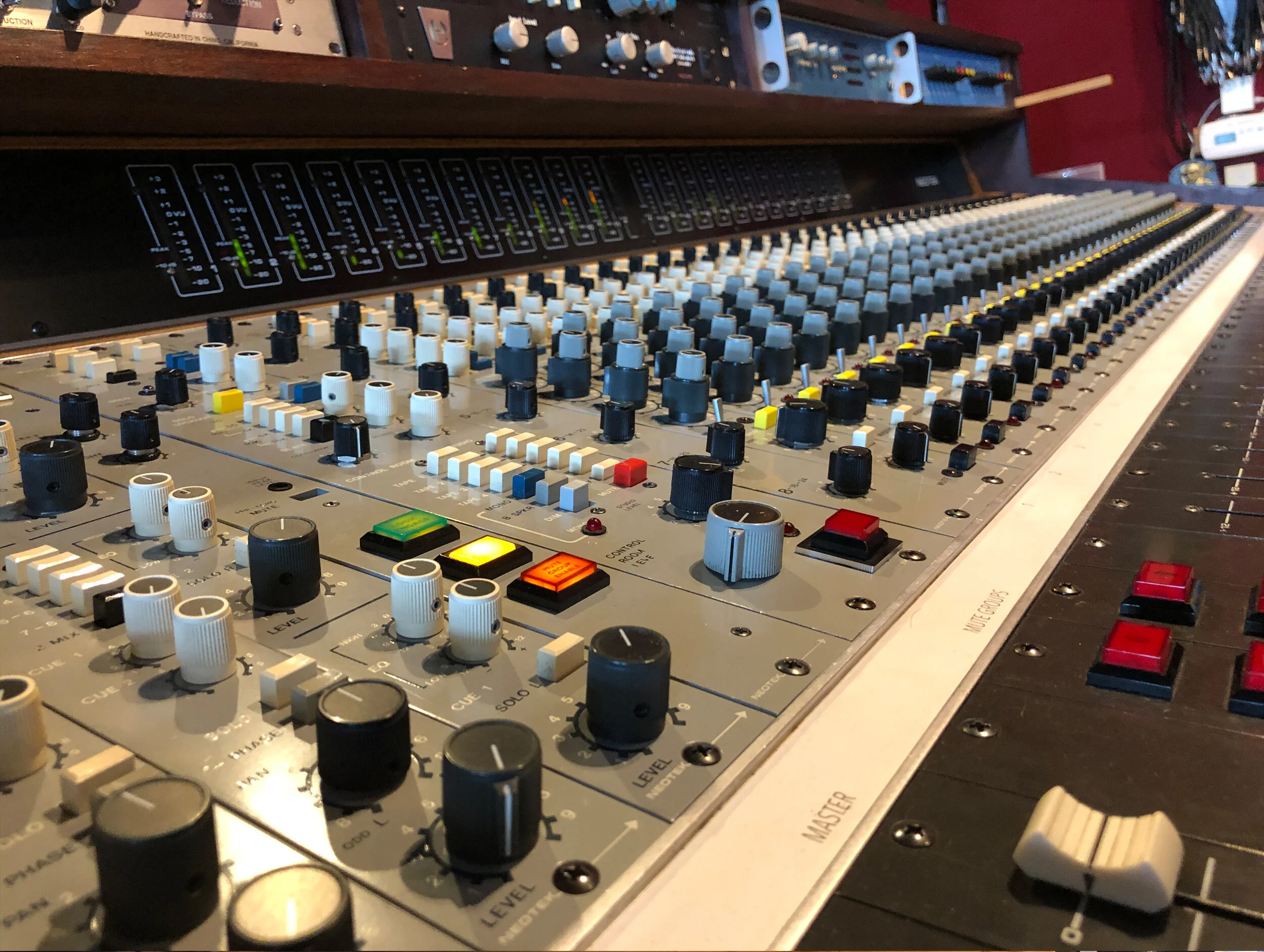Studio A
Neotek Elite >> Custom Built
General Features
This Elite was custom made for us in 1998 by Martinsound. It is known for its transparency, flexibility, extremely low distortion, and low noise.
48 mono channels with two signal paths, individually assignable to mix buses or output buses (96 inputs)
8 stereo inputs, 4 mono effect returns, 8 stereo effect returns
8 stereo subgroups which can be used as outputs, stereo submixes, or telescoped into each other with balanced inserts (great for creating mix stems)
2 stereo buses, which can be used separately or combined
Custom Features:
Flying Faders automation
Simplified solo-in-place function
Second stereo bus (which can be combined with main stereo bus)
Individually-buffered stereo outputs for each master recorder
Balanced pre-fader insert on stereo master for mix processing
Direct outputs on each channel
2 line inputs on each channel
3 speaker selector
Rear speaker switch
Oscilloscope displays monitor output
Talkback switch and mic at console, and additional switch at rear sofa
Automatic or manual recording privacy lights outside studio doors
Studio B
Neotek Series II >> Custom Modified
History & Characteristics:
36-channel 8-bus in-line console which used to be in Steve's house. This console was completely refurbished by Mike Stoica of Sytek (former Neotek designer and owner of Neotek).
It has a clean sound. The EQ section is precise and transparent (4 band parameteric). The mic pre-amps are quiet and accurate (discrete input section, solid state amplification).
Custom Modifications:
If you are familiar with Neotek Series II desks, the modifications we have made to ours may interest you.
In a standard Series II, the monitor path from the tape machine is through the small pots labelled Monitor, unless the Mixdown button is pressed, which routes the channel audio to the 2-Mix. The fader is normally routed to the output buses for recording. This necessitates a complete changeover of the board before you can enter mix mode in a session. We have changed this configuration in two ways: The channel audio now goes to the output buses from the small pot labelled Monitor, while the tape return goes to the fader. This means that the mix can be left undisturbed from the start of the session to the end, and a session can include tracking, overdubbing and mixing at any time, without changing the status of the channels.
The other modification was the insertion of muting relays, which allows up to 10 mute groups to be assigned using thumbwheels on the channels. The relays also function on solo button logic, which allows for solo-in-place, which didn't exist on the original console. The mute groups, solo-in-place, and the muting relays themselves can be defeated on a per-channel basis or globally.
The console was upgraded with the following for better stability and performance in 2012.
All of the electrolytic capacitors were replaced
All the molex style connections were replaced with gold plated versions.
Channel path pushbutton switches replaced with high quality gold-contact equivalents.









